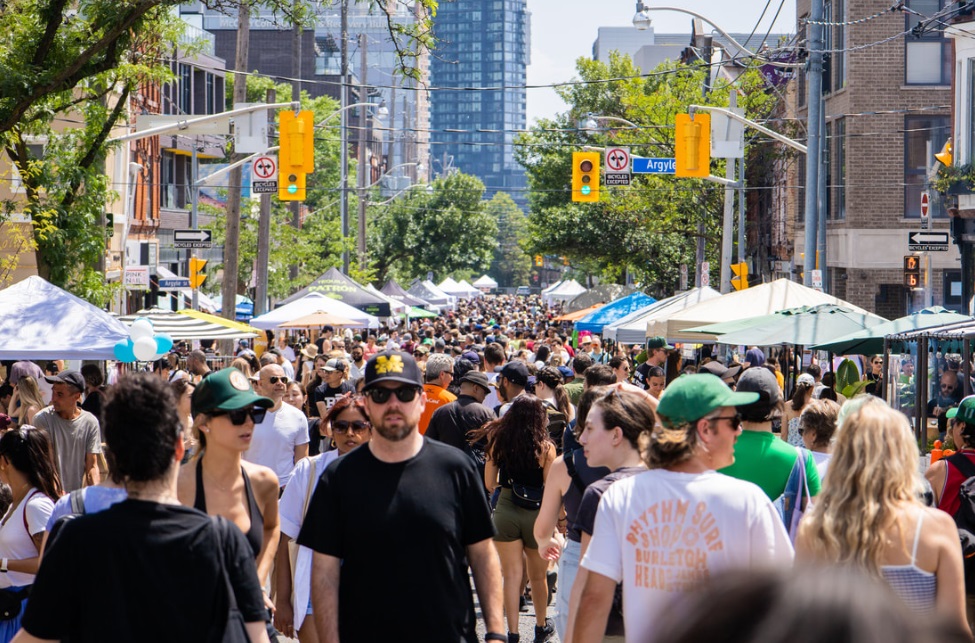Experts urge caution as forest fire season ramps up in Ontario, flames spread in the west
Posted May 20, 2023 7:46 am.
Last Updated May 20, 2023 7:47 am.
As flames continue to fan across parts of Alberta and British Columbia, experts urge caution in Ontario while forest fire season ramps up in the province.
“We’ve been lucky we haven’t had a terrible season yet and while there is the potential that we’ll see more fire activity later on this season, we’re already being impacted by forest fires because of the smoke from B.C. and Alberta,” Dr. Eric Kennedy, an associate professor of disaster and emergency management at York University, told CityNews during an interview about fires.
“Folks need to remember that that smoke can be really bad for your health, not just for those with preexisting conditions, although they can be affected worse by it, for everyone including even our pets.”
The haze seen occasionally in southern Ontario in recent days serves as a reminder of what’s coming to the province and reinforces the need to be prepared.
“Agencies across Canada have been attuned to the need to be better prepared for these early season fires to be ready to go early on for these events in May and potential big fire loads,” Kennedy said.
He referred to a network of mutual aid that has been set up across the country where resources from other provinces can be redeployed to where there’s an urgent need. Support can also come from crews in the United States, Mexico and Australia. There are nearly 200 crew members from Ontario on the ground in Alberta.
While wildland fires happen every year, there are concerns climate change is creating greater instability and intensity with warmer and drier temperatures.
“We know that climate change definitely is affecting, and has the potential to further affect, forest fires in Canada and around the world. So hotter days, drier days, windier days, those are all things that make fires more likely and more severe when they do occur and so we certainly have to be ready for that,” Kennedy said.
The sentiment was echoed by Justin Podur, a professor in York University’s faculty of environmental and urban change who has researched forests in Ontario and the effects caused by fire.
“We do have to take climate change into account or we will face more it’ll be more like a disaster than an adaptation that we can make,” he said.
RELATED: Wildfire officials warn heat is now a concern in Alberta’s south too
“Generally speaking, climate change causes an overall average temperature increase. It also causes more unpredictable weather patterns.
“If you have a longer period of hot, dry temperatures, the whole forest dries out and then you get a whole bunch of fires that … it’s just too hot to handle and all you can do is get out of the way.”
Despite the concern, fire can help in a positive with regeneration in some instances. Officials sometimes will leave certain fires burning.
“Fire is a natural part of the ecosystem and so we’ll let it go,” Podur said.
“We have to make a call on each fire. We have to look very carefully at where it is, what’s around it, what the conditions are, what the likelihood is that it could escape and then decide exactly whether to leave it.”
Both Kennedy and Podur said there are other contributing factors that can heighten the risks associated with forest fires.
Kennedy said people have to take a stronger role in prevention as they navigate nature.
“ATVs can be a culprit in causing fires (and) same with hot exhaust pipes from vehicles, making sure that you’re not backing those into hot and dry grass. We also need this at a systemic level to make sure that industry is complying with fire prevention standards that our rail and timber industries are continuing to be really cautious about this,” he said.
Podur said we also need to change our thinking when it comes to where we’re developing.
“Where we build homes where we build things of a value, that then become at risk in a new environment that may not have seen as much fire,” he said.
“It might be nice to have a house surrounded by trees, but that might not be the wisest thing in an environment that is undergoing more frequent fires than we’ve ever had before.
How Ontario prepares for its annual forest fire season
Ontario Ministry of Natural Resources and Forestry staff told CityNews between the beginning of April and the end of October is when forest fires are at risk of happening.
Amy Peltonen, a fire information officer with the ministry, said the season is off to a good start with just six fires currently burning but that comes with an important note.
“Although we are off to a little bit of a slow start compared to our 10-year average, we are always remaining constantly vigilant monitoring the weather situation as well as fire behaviours,” she said.
“One of the biggest challenges faced each year is the unpredictability of upcoming fire season due to ever-changing weather patterns and fire behaviour from one season to the next.”
Peltonen said there are currently 156 crews made up of four to six fire rangers that can be deployed each season assisted by more than 500 support staff that can assist with fire management.
There are also 80 crews of four on contract that can be brought in as needed. When it comes to equipment, there are currently 28 specialized aircraft, including nine water bombers and eight helicopters, that can be used to fight fires.
As we head into the Victoria Day long weekend, Peltonen encouraged people to go to professionally staged fireworks shows and gave this reminder for those who want to discharge fireworks on properties in forested areas.
“You are responsible for extinguishing any residue from setting off fireworks. If you cause a wildland fire due to unextinguished fireworks and residue, you can be charged and held responsible for paying for the cost of putting out the fire,” she said.
Throughout the forest fire season, Peltonen urged people to be fire-smart and gave the following tips:
- Remove natural debris and overgrowth from the property and from the outside of structures, take it to a landfill or compost it instead of burning
- Have hand tools, water nearby to extinguish small fires
- No combustible materials within one metre of the campfire
- Limit fires two hours before sunset and two hours after sunrise when it’s less ideal for fire spread
- Fully extinguish fires, no red embers should be showing
- Fireworks should be done in areas without flammable materials, ideally on gravel and near water
- Check the Ontario forest fire information map for hazards, watches and warnings for your area








